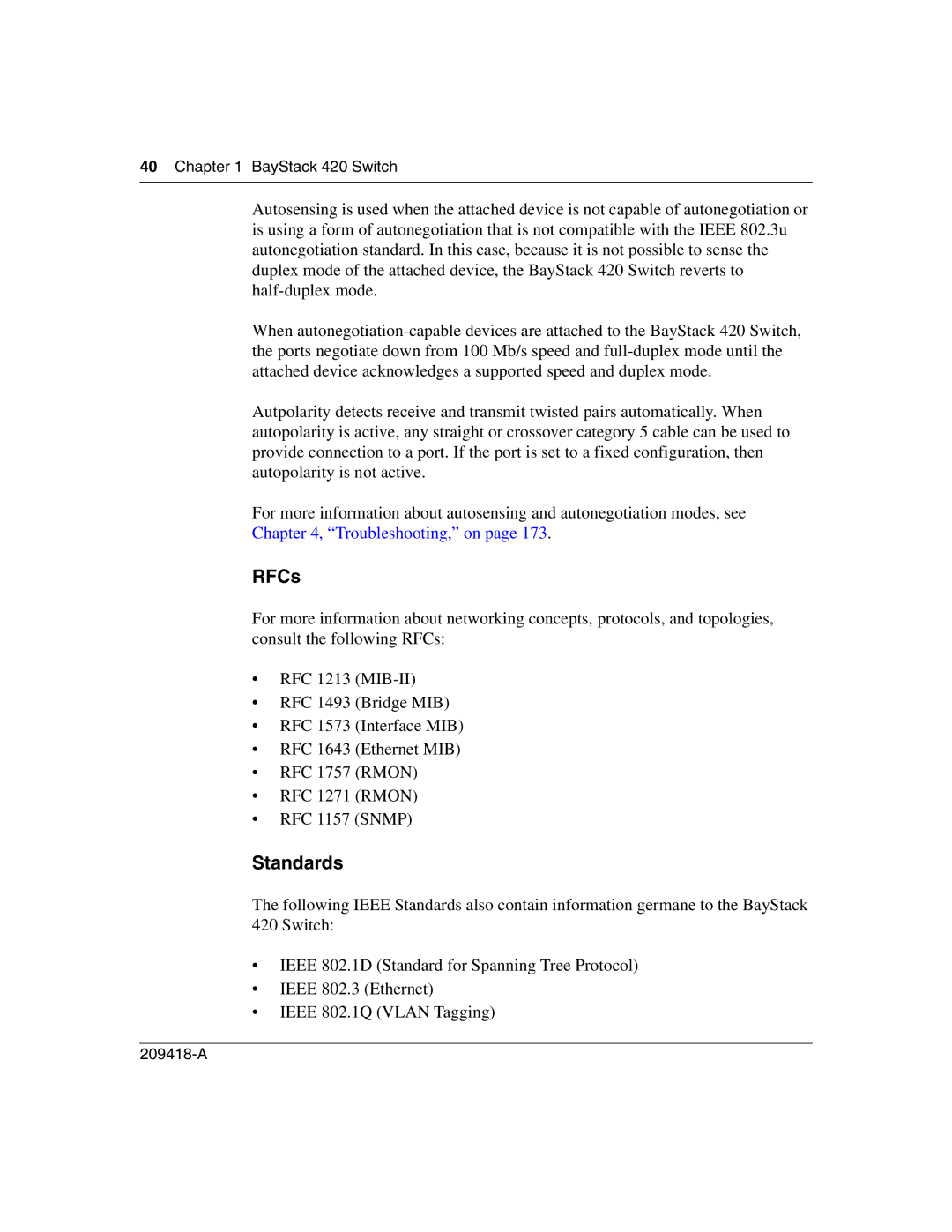
40 Chapter 1 BayStack 420 Switch
Autosensing is used when the attached device is not capable of autonegotiation or is using a form of autonegotiation that is not compatible with the IEEE 802.3u autonegotiation standard. In this case, because it is not possible to sense the duplex mode of the attached device, the BayStack 420 Switch reverts to
When
Autpolarity detects receive and transmit twisted pairs automatically. When autopolarity is active, any straight or crossover category 5 cable can be used to provide connection to a port. If the port is set to a fixed configuration, then autopolarity is not active.
For more information about autosensing and autonegotiation modes, see Chapter 4, “Troubleshooting,” on page 173.
RFCs
For more information about networking concepts, protocols, and topologies, consult the following RFCs:
•RFC 1213
•RFC 1493 (Bridge MIB)
•RFC 1573 (Interface MIB)
•RFC 1643 (Ethernet MIB)
•RFC 1757 (RMON)
•RFC 1271 (RMON)
•RFC 1157 (SNMP)
Standards
The following IEEE Standards also contain information germane to the BayStack
420 Switch:
•IEEE 802.1D (Standard for Spanning Tree Protocol)
•IEEE 802.3 (Ethernet)
•IEEE 802.1Q (VLAN Tagging)
